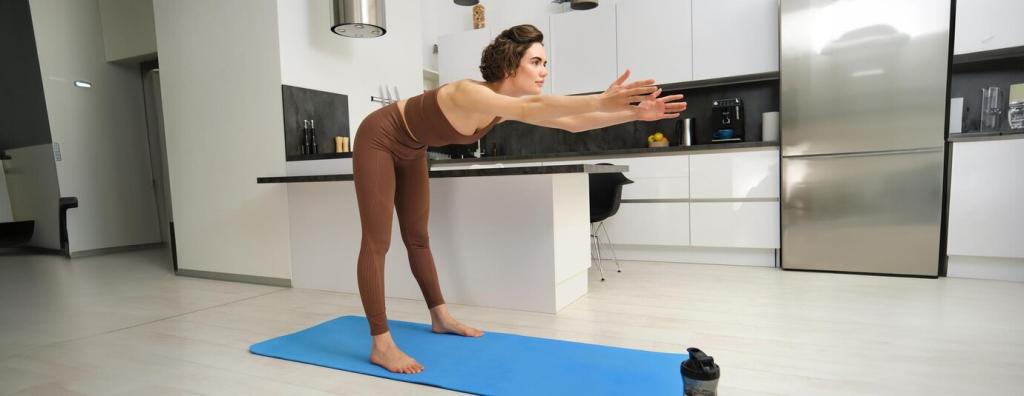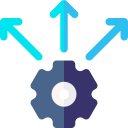Daily Flexibility Yoga Routine: Move Better, Feel Lighter
A Simple Daily Flow You Can Actually Keep
Morning Wake-Up Sequence
Start with three slow rounds of Cat–Cow to wake your spine, then step into Low Lunge on each side and ease into Downward-Facing Dog. Keep knees soft, breathe evenly through the nose, and feel your shoulders broaden. Two gentle rounds create a daily flexibility rhythm before emails, coffee, or calls. Comment when you finish to anchor the habit.
Evening Unwind Stretch
End the day with long exhalations in a Reclined Hamstring Stretch using a strap or towel, then a Figure-Four to soothe hips, and Child’s Pose to quiet the mind. Breathe in for four counts, out for six, and notice your nervous system downshift. This daily flexibility ritual helps release desk tension and prepares your body for deeper, more restful sleep.
Micro-Sessions That Add Up
When life crowds your calendar, do three one-minute moves: a doorframe calf stretch, a gentle neck glide, and a seated spinal twist. Consistency beats intensity in any daily flexibility yoga routine. Set a phone reminder, pair it with water breaks, and drop a quick emoji check-in to celebrate tiny wins that compound into noticeable range of motion.
Why Daily Flexibility Works: Science You Can Feel
Muscle and connective tissue are viscoelastic, responding best to gradual, regular loading. Holding stretches around thirty to sixty seconds invites new length without panic signals. Over weeks, your daily flexibility routine cues more comfortable end ranges. Progress feels subtle, then suddenly obvious when everyday movements become smoother and easier.
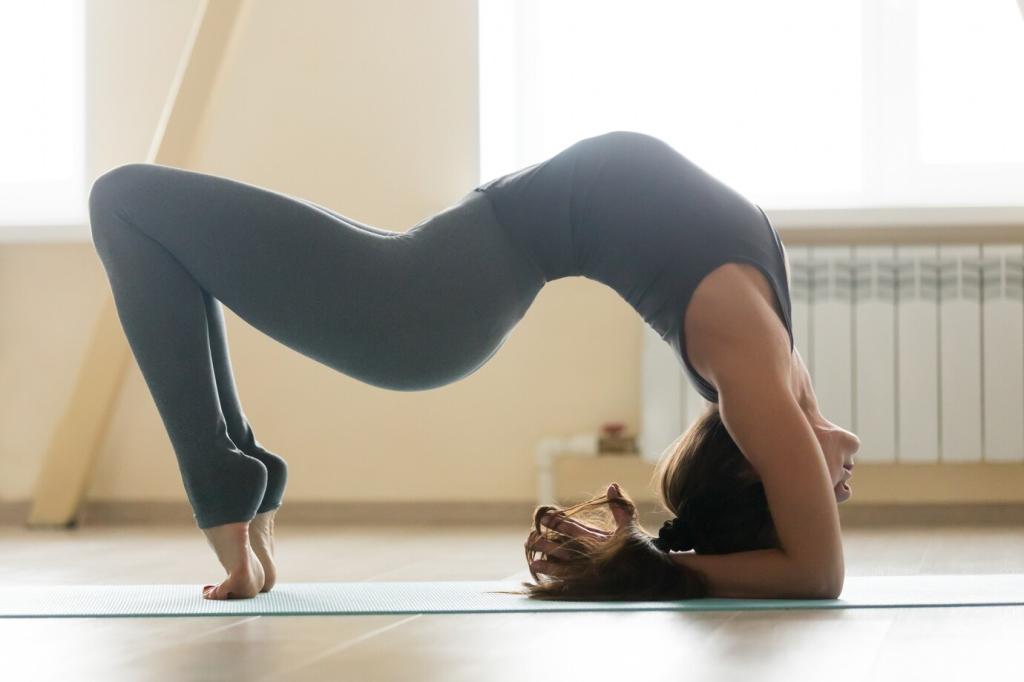
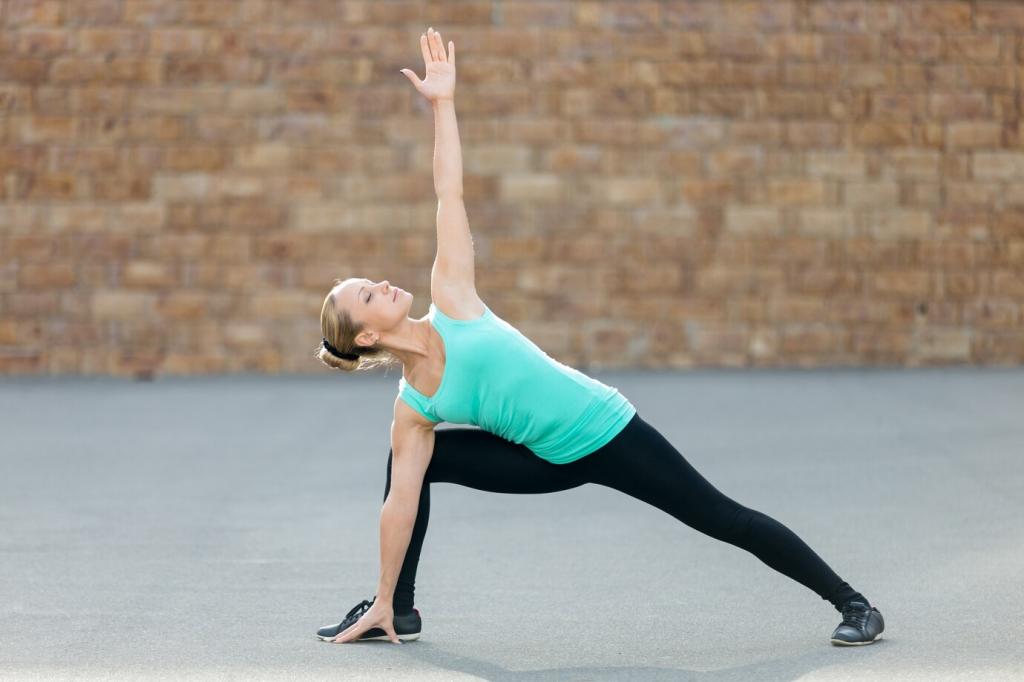
Why Daily Flexibility Works: Science You Can Feel
Your breath teaches the nervous system safety. Slow nasal inhales and longer, quieter exhales increase relaxation and reduce guarding. As your body senses calm, muscles soften, and flexibility becomes available. Practice a simple four-count inhale and six-count exhale during every hold in your daily flexibility yoga routine to unlock gentle, sustainable range.
Form Cues for Key Poses in Your Daily Routine
Root hands evenly, spiral biceps forward, and soften your knees so the spine lengthens first. Think long back, not straight legs at any cost. Press the floor away to broaden shoulder blades and invite space around your neck. Breathe steadily, and aim for comfort you can repeat every day without strain.
Tuck the tail slightly to lengthen hip flexors without dumping into the low back. Keep front knee over ankle and activate the back glute for support. Use blocks under hands to lift the floor to you. This alignment transforms the pose into a daily flexibility favorite that releases desk hips safely and reliably.
Hinge from your hips, not your spine. Micro-bend knees, lengthen through your chest, and use a strap around the feet to meet your body where it is. Stay patient, breathe longer exhales, and sense hamstrings gradually yielding. Revisiting this pose gently each day builds flexibility with respect, not force or frustration.
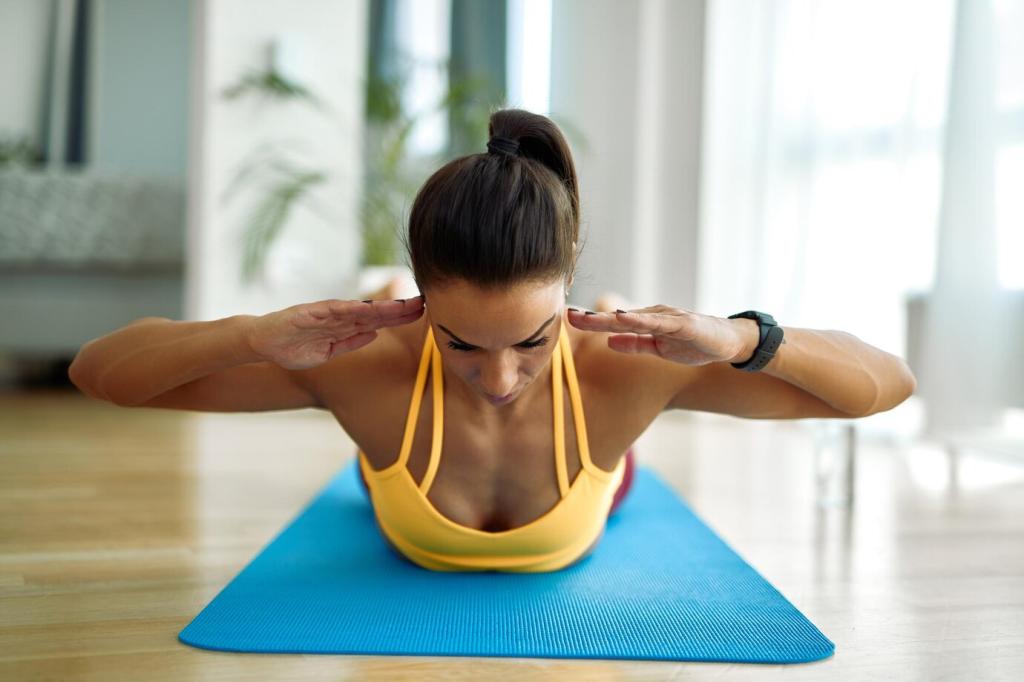
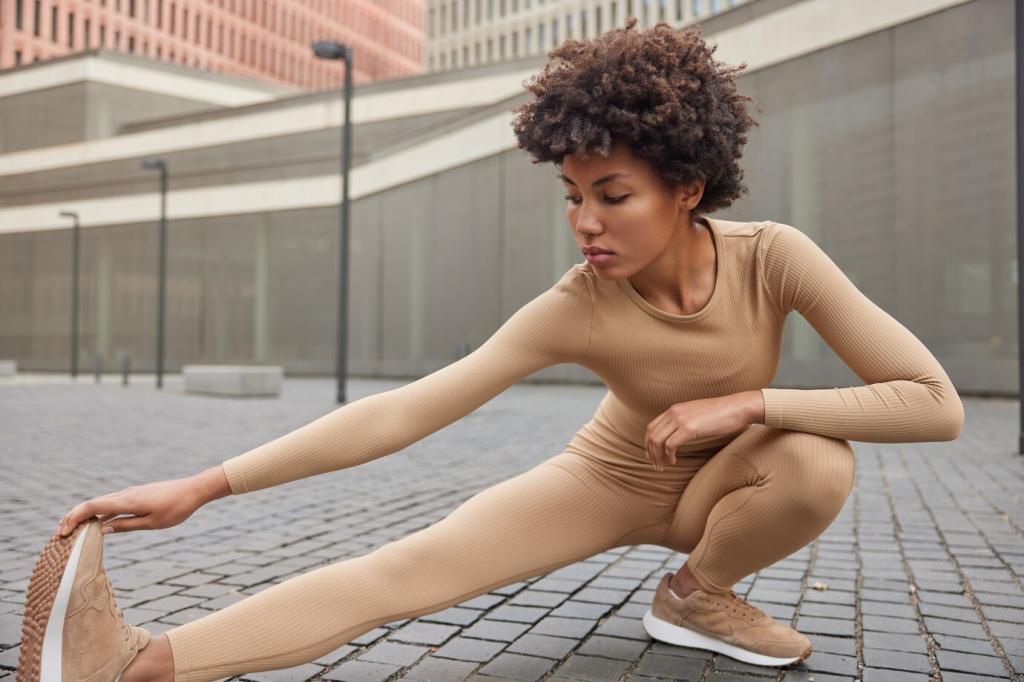
Stories From the Mat: Real Routines, Real Results
After months of video calls, Alex added a two-minute lunge and a sixty-second calf stretch before lunch. Within three weeks, stairs felt easier and runs stopped tugging at the hips. The secret was consistency, not intensity. Share your between-meeting stretches in the comments and inspire someone else to try the routine today.
Stories From the Mat: Real Routines, Real Results
Mina paired a ten-minute nightly sequence with longer exhales in Child’s Pose and Figure-Four. Nightly restlessness softened, and mornings started without back tightness. Her daily flexibility yoga routine became a quiet bedtime ritual she actually looked forward to. Try it tonight and report back with one word that describes how you slept.
Build Your Personal Daily Flexibility Plan
Assess Your Baseline Without Judgment
Note how far you hinge in a forward fold, how your hips feel in a lunge, and whether breath stays calm in each hold. Record sensations rather than chasing numbers. This awareness guides your daily flexibility yoga routine with kindness. Share your baseline in the comments to celebrate honest starting points.
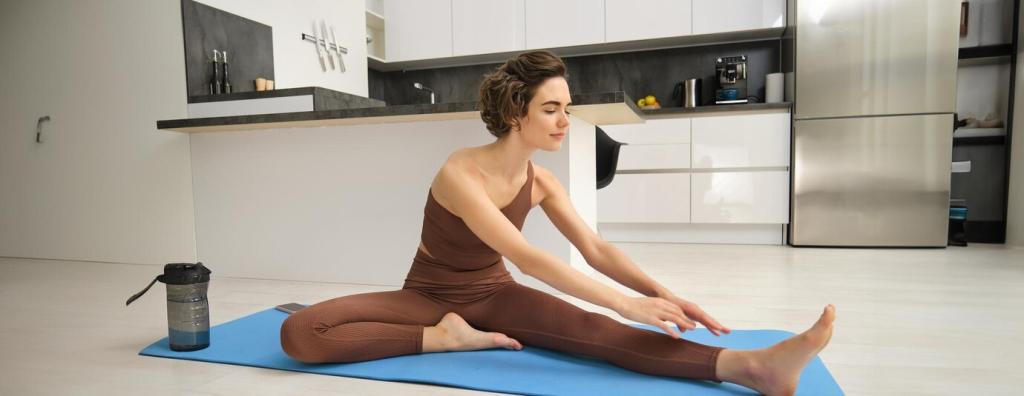
Safety, Accessibility, and Staying Motivated
Aim for warm, stretchy sensations, never sharp pain or numbness. Ease off if joints feel cranky or breath turns choppy. Red flags deserve rest or professional guidance. Your daily flexibility yoga routine should leave you brighter, not bruised. Listen closely, adjust freely, and comment if you want tailored suggestions.
